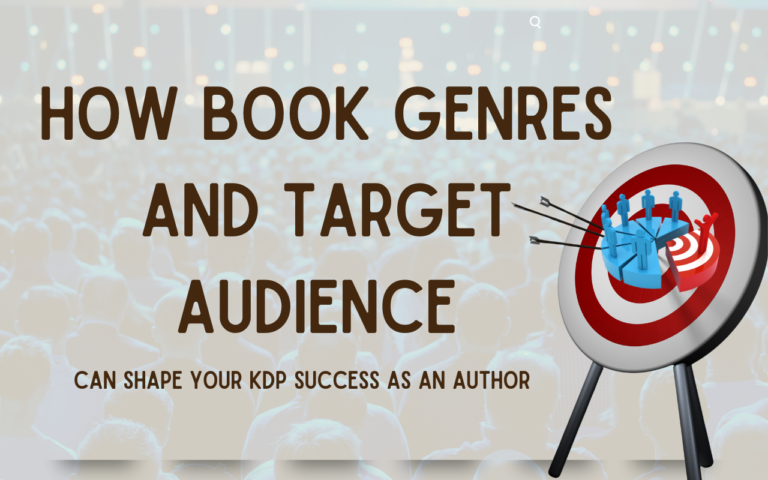From 3-Act Structure to Stephen King’s Method: My 5-Stage Plotting Journey
When I started writing novels, I was completely lost. I had great ideas, but I had no clue how to turn them into a structured story. Some days, I thought I was a plotter—I’d spend hours outlining every detail. On other days, I felt like a pantser, letting the story unfold on its own. The problem? Neither method seemed to fully work for me.
So, I did what every desperate writer does—I spent days and nights researching different outlining techniques, testing them out, and figuring out which one actually worked. I tried everything, from the 3-Act Structure to Save the Cat!, from the Hero’s Journey to the Snowflake Method. And after years of ghostwriting novels across multiple genres, I finally found a balance: a mix of structure and free-flowing creativity—something even Stephen King would approve of.
If you’ve ever struggled with plotting, trust me, you’re not alone. Here’s what I learned from testing some of the most popular outlining methods and how I ended up somewhere with a completely different “Stephen King” method from where I started.
Stage 1: The 3-Act Structure
Like most new writers, I started with the 3-act Structure because it seemed like the easiest way to keep my stories from falling apart. At its core, it’s a simple framework that has been used in books, movies and plays for centuries.
How it works
- Act 1: The Setup
This is where the story begins. The main character is introduced, along with their world, goals, and conflicts. Something happens—called the inciting incident—that throws their life off balance and forces them to act. For example, in The Hunger Games, Katniss volunteers as a tribute. In Harry Potter, he finds out he’s a wizard. This moment is what pushes the story into motion. - Act 2: The Conflict
This is where things get messy. The main character faces obstacles, makes mistakes, and grows along the way. The midpoint twist (a major turning point) keeps the reader engaged, raising the stakes and making things harder for the protagonist. This part of the book should be packed with tension, conflict, and character development. - Act 3: The Resolution
Everything leads to the final showdown—the climax. The protagonist faces their biggest challenge, either winning or losing, but ultimately changing because of their journey. The loose ends are tied up, and the story reaches a satisfying conclusion.
Learn the detailed version of the 3-act structure with a FREE outline template.

When I first started using this method, it worked well. It gave my stories direction and stopped me from writing aimlessly. But after ghostwriting dozens of books, I started to see its limitations.
- Sometimes, my characters needed more beats to make their arcs feel natural.
- The structure felt too broad—it gave a general roadmap but didn’t help much with pacing.
- I needed a system that broke the story down further and helped me create momentum in every chapter.
That’s when I discovered Save the Cat! Beat Sheet and it just changed everything for me.
Stage 2: Save the Cat! Beat Sheet
After struggling with the broad strokes of the 3-act Structure, I found myself searching for something more detailed—something that could help me with pacing and emotional beats-something like stephen king’s approach maybe(but I couldn’t found that one yet). But I stumbled upon Blake Snyder’s Save the Cat! Beat Sheet.
This method doesn’t just tell you what happens in each act; it breaks the story’s 3 acts into 15 key moments (or “beats”) that keep the narrative moving. it was a game-changer for me. Instead of getting lost in the middle of my novel, I had clear checkpoints that helped me a lot to stay on track.
How it works
Act 1: The Setup (First 25%)
- Opening Image – The first scene that sets the mood and tone.
- Theme Stated – A line or moment that hints at the story’s deeper meaning.
- Set-Up – Introduce the protagonist’s world and flaws.
- Catalyst – The inciting incident that disrupts their life.
- Debate – The protagonist hesitates before committing to action.
Act 2: The Conflict (50%)
- Break into Two – The protagonist finally decides to move forward.
- B Story – A subplot (often a romance or friendship) that influences the main arc.
- Fun & Games – The “promise of the premise,” where the story delivers on its core idea.
- Midpoint – A major turning point, often a false victory or crushing defeat.
- Bad Guys Close In – Things start going downhill. Tensions rise.
- All Is Lost – The protagonist faces their lowest point.
Act 3: The Resolution (Final 25%)
- Dark Night of the Soul – The protagonist reflects on their failures.
- Break into Three – They realize what they must do and take action.
- Finale – The climax, where everything is resolved.
- Final Image – The last scene, shows how the protagonist has changed.
But as much as I loved Save the Cat!, I started to realize that not every story fit into this rigid structure. Some stories needed more freedom, especially when I was writing fantasy, historical fiction, or character-driven novels. That’s when I decided to explore some other plotting methods before reaching to Stephen King approach.
Stage 3: The Hero’s Journey
Just when I was tired of finding a good approach to writing outlines where I could show the character transformations, I came across The Hero’s Journey, a storytelling structure made famous by Joseph Campbell. Unlike the Save the Cat! Beat Sheet, which is heavily focused on pacing and commercial storytelling, The Hero’s Journey is all about character transformation. It’s the backbone of myths, epic fantasies, and adventure stories. You can think about Star Wars, The Lord of the Rings, and Harry Potter.
This method follows a 12-step cycle, where the protagonist starts an adventure, faces trials, undergoes change, and returns as a different person.
How it works
Act 1: Departure (The Ordinary World to the Call to Adventure)
- Ordinary World – We meet the protagonist in their everyday life.
- Call to Adventure – Something disrupts their normal world.
- Refusal of the Call – The protagonist hesitates, afraid to take action.
- Meeting the Mentor – A mentor figure appears to guide them.
- Crossing the First Threshold – The protagonist leaves their familiar world behind.
Act 2: Initiation (Trials, Growth, and Transformation)
- Tests, Allies, and Enemies – They face early challenges and meet key characters.
- Approach to the Inmost Cave – They prepare for their biggest test yet.
- The Ordeal – A life-or-death moment that changes everything.
- Reward (Seizing the Sword) – They gain new knowledge, power, or insight.
Act 3: Return (The Road Back to Transformation)
- The Road Back – They start their journey home, but obstacles remain.
- Resurrection – A final, climactic test that determines their fate.
- Return with the Elixir – They return home, forever changed.
I loved this structure because it focused on character growth, making it great for emotionally rich stories. But while it was perfect for fantasy, historical fiction, and epic sagas, I found it too elaborate for shorter, fast-paced genres like romance or thrillers.
At this point, I had tried the 3-Act Structure, Save the Cat!, and The Hero’s Journey and I was still tweaking my process. That’s when I discovered The Snowflake Method, a plotting system that completely changed the way I developed my ideas.

Stage 4: The Snowflake Method
At this stage, when I had experimented with different structures, I was still thinking there was something off—especially when it came to developing complex plots and layered characters. That’s when I discovered The Snowflake Method, created by Randy Ingermanson.
Unlike the other methods, which focus on breaking down an existing idea, The Snowflake Method helps you build your story from scratch—starting from a single sentence and expanding it into a full novel. It’s perfect for writers who like to develop their story organically. Remember I was still unaware of Stephen King’s plotting method yet.
How it works:
1: One-Sentence Summary
Start with a single, high-concept sentence that contains the whole essence of your novel.
If I give you an example from “The Hunger Games“, you’d have clear picture in mind.
Example: A rebellious girl volunteers for a deadly competition to save her sister.
Think of this as the pitch you’d give if someone asked, “What’s your book about?”
Imagine Katniss’s reaction when her sister’s name is called:
“Prim?” My voice trembles. No. This can’t be happening. My body moves before my brain can stop it. “I volunteer! I volunteer as tribute!”
2: One-Paragraph Summary
Expand that sentence into a five-sentence paragraph covering the setup, major conflicts, and ending.
Let’s say you’re writing a mystery novel. Your paragraph might look like this:
A rookie detective is assigned to solve the murder of a famous author. As she digs deeper, she realizes the killer is imitating the author’s books. With pressure mounting and the body count rising, she must confront her past to stop the next victim—or risk becoming one herself.
3: One-Page Summary for Each Major Character
Next, write a one-page summary for each important character. Include:
- Their backstory
- Their goals and motivations
- What they fear the most
For example, if you’re writing a fantasy novel, your hero might be a runaway prince hiding his identity:
Example: The Runaway Prince
Name: Prince Aedric Valorien
Backstory: Once the heir to the Valorien throne, Aedric’s life changed the night his father accused him of treason. Framed by a power-hungry advisor, he barely escaped with his life and has spent the last five years in hiding, surviving as a mercenary in the war-torn outskirts of the kingdom. Though stripped of his title, the blood of kings still runs through his veins, and deep down, he dreams of reclaiming what was stolen from him.
Goals & Motivations: Aedric longs to see justice served and his father’s true betrayers exposed. He doesn’t seek the throne for power, but because he believes his people deserve a ruler who cares for them. However, trust is something he struggles with—years of betrayal and survival have made him wary of alliances, even those that could help him reclaim his kingdom.
Greatest Fear: That he will never be more than a fugitive, doomed to live and die in the shadows. He fears failing the people who still believe in him and, more than anything, becoming the kind of ruler his father was—cold, ruthless, and willing to sacrifice anything for control.
4: Expanding to a Four-Page Plot Summary
Now that you have your core idea and character foundations, it’s time to develop your story further. Expand your one-paragraph summary into four structured sections:
- Setup (First 25%) – Introduce your protagonist, their world, and the inciting incident that sets the story in motion.
- First Major Conflict (25-50%) – Show the character facing obstacles, making choices, and experiencing early failures.
- Midpoint & Turning Point (50-75%) – Deepen the conflict, introduce twists, and force the character to reevaluate their approach.
- Climax & Resolution (75-100%) – Build toward the final confrontation and resolution, ensuring every thread is tied up.
Using Aedric’s story as an example, his setup would establish his life in exile, his refusal to acknowledge his past, and the moment he’s forced to act—perhaps when rebels seek him out. The first major conflict might involve him reluctantly helping them, only to realize he’s in more danger than he thought. The midpoint could be his discovery of the real traitor and a devastating personal loss that tests his resolve. Finally, the climax would see him confronting his father’s betrayers and reclaiming his identity, though at a great personal cost.
5: Expanding Each Scene
With your four-page plot summary in place, break it down even further. List each key scene and describe what happens, keeping track of how the stakes rise. You don’t need to write the full novel yet—just a rough outline of the major beats.
At this point, your story will have grown from a one-sentence pitch to a detailed roadmap. If you’re a plotter, you’ll have everything planned out. If you’re a discovery writer, you still have room to explore within a structured framework.
But what if I say ” something was missing”?
Amber Firdous
As a Top Rated freelancer on Upwork with a 100% job score, Amber has worked with indie authors, publishers, and publishing houses to help them turn their ideas into well-written stories through professional ghostwriting.

Stage 5: Stephen King’s Plotting Method
Up until this point, I had carefully structured my story using the Snowflake Method, starting from a single sentence and expanding it into a detailed roadmap. But something still felt off. The plot felt rigid, as if I were following a script rather than letting my characters breathe.
I started questioning whether the structure was limiting my creativity.
That’s when I came across Stephen King’s “write into the dark” method. In his book On Writing, Stephen King talks about how he never outlines—he just sits down and writes, letting the story unfold naturally.
At first, this sounded terrifying. No outline? No roadmap? What if I got lost halfway through?
But I decided to give it a shot. Instead of carefully planning my next ghostwriting project, I started with just an idea:
A man wakes up in a locked room with no memory of how he got there.
That was it. No character sheets. No three-act structure. Just a premise based on stephen king approach.
But what happened next?
1. The Characters Surprised Me
In my locked-room story, I initially thought the main character was a victim. But a few chapters in, I wrote this scene:
“You don’t remember, do you?”
The woman in the chair stares at me, her wrists bound.
“Remember what?” I whisper.
She swallows hard. “You put me here.”
I sat back in shock. I hadn’t planned this twist—it just happened. But it felt right. The story was telling itself. I really love Stephen king method at that moment.
2. The Plot Became More Organic
Instead of forcing the story to fit a pre-determined structure, I followed the character’s motivations. What would really happen next?
If you’ve ever watched a horror movie and thought, Why would they go into the basement? That makes no sense!—you’ll appreciate this method. Because when you let characters act realistically, the plot unfolds in a way that feels natural.
3. Momentum Kept Me Going
One of the biggest problems with heavy outlining is losing excitement. When I already know every twist and turn, the writing process can start feeling mechanical.
But when I wrote the stephen King’s way, every writing session felt like I was reading the book for the first time. I didn’t know what would happen next, and that made me want to keep writing.
I really appreciated Stephen King’s approach. He believes stories are like fossils—you dig them up piece by piece, rather than build them from scratch. This means you don’t force the plot to go a certain way. Instead, you let the characters react naturally and see where they take you.
Personal Tip for Writers
Stephen King’s approach isn’t for every writer or every project. But I found that it works best when:
- You’re writing character-driven stories (psychological thrillers, contemporary fiction, horror).
- You trust your instincts and don’t mind rewriting.
- You enjoy the mystery of storytelling, discovering the plot as you go.
Conclusion – Finding the Right Method for You
After years of ghostwriting, experimenting with different outlining methods, and switching between structured planning and free-flow writing, I realized one thing: there’s no single “correct” way to write a novel.
- The Three-Act Structure gave me a strong foundation, helping me understand how stories flow.
- Save the Cat refined my pacing, ensuring every scene served a purpose.
- The Snowflake Method helped me build complex stories from a simple idea.
- Stephen King’s method showed me the magic of letting a story surprise me.
So, which one should you use?
It depends on what kind of writer you are. If you thrive on structure, outlining might be your best friend. If you love the thrill of discovery, freewriting could work for you. Or maybe, like me, you’ll find a balance—outlining just enough to guide you, but leaving room for unexpected twists.
For me, The best method is
The one that gets you to “The End.”
Other Related Articles













